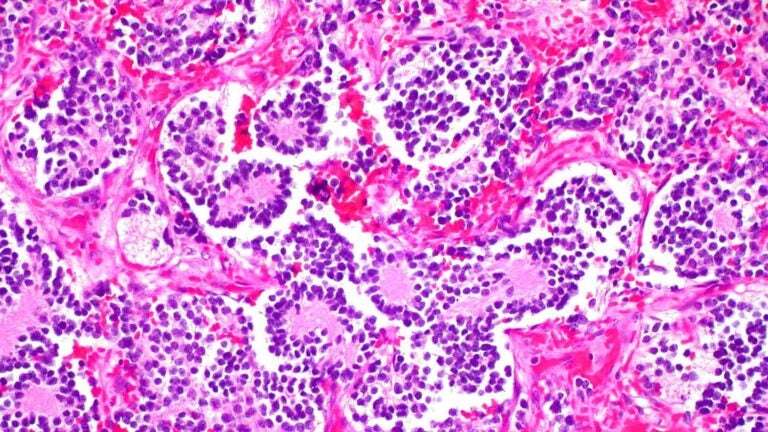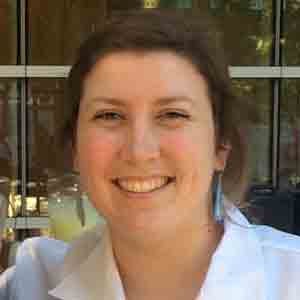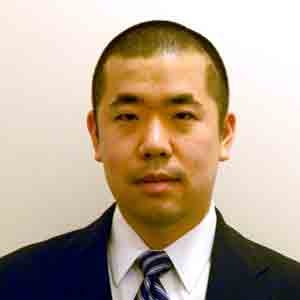
Abigail Zamora will study the cells that cause neuroblastoma, an aggressive cancer that often affects children. (Photo/ Ed Uthman)
Stem cells used to build bone and fight cancer
Supported by the Broad Foundation and their mentors, two Trojans take innovative approaches to ongoing health issues
This year’s Broad Clinical Research Fellows will apply stem cell-based approaches to two prevalent problems: non-healing bone injuries, which affect 5 million Americans each year, and neuroblastoma, the most common solid tumor in children.
Established by The Eli and Edythe Broad Foundation in 2015, the Broad Clinical Research Fellowships enable California-certified clinical scientists to engage in research that accelerates the translation of stem cell-related approaches to treat injury and disease. The fellowships are potentially renewable for a second year.

Abigail Zamora, a general surgery resident at Los Angeles County + USC Medical Center, will study the cancer stem cells that cause neuroblastoma. For children with high-risk metastatic neuroblastoma, the survival rate is currently less than 50 percent. Zamora hopes to improve this prognosis by understanding the molecular signals that drive cancer stem cells to be aggressive, and interfering with those signals.
Further characterization of the role of cancer stem cells in metastatic neuroblastoma may improve treatment and ultimately survival for children suffering from high-risk disease, according to Zamora.
She will perform this research in the lab of her mentor Eugene S. Kim, attending pediatric surgeon at Children’s Hospital Los Angeles and associate professor of surgery at the Keck School of Medicine of USC.
“The high impact nature of this research project coupled with Abby’s outstanding work ethic and previous basic science experience make her an ideal Broad Clinical Research Fellow,” Kim said. “I am confident she will be successful and, through her efforts, make important contributions to both our understanding of the biology and cancer stem cells in neuroblastoma and our approach and implementation of novel targeted therapies.”
Bone defects
Hyunwoo “Paco” Kang, an orthopedic surgery resident at the Keck School of Medicine, will use stem cells to treat critical-sized bone defects, or fractures that are too large to heal on their own.

A previous Broad Clinical Fellow, R. Kiran Alluri, genetically modified the stem cells to produce a protein, called bone morphogenetic protein, that serves as a signal to encourage the production of bone. Kang will build on this progress by loading genetically modified stem cells onto a 3-D printed scaffold, which he then will surgically implant into the injured femurs of rats. If this approach is successful, it will be a first step toward developing a similar treatment for human patients.
Kang will pursue this project under the guidance of his mentor Jay R. Lieberman, a pioneer in the field of gene therapy for bone repair.
“Paco is an extremely intelligent and hard-working individual,” said Lieberman, professor and chairman of the Department of Orthopaedic Surgery at the Keck School, and professor of biomedical engineering at the USC Viterbi School of Engineering. “He is passionate about scientific discovery, and I know he will do an outstanding job on this project. This fellowship should be a springboard for his development as an academic orthopadic surgeon and hopefully provide him with the tools to direct his own research program some day.”
According to Andy McMahon, director of the Eli and Edythe Broad Center for Regenerative Medicine and Stem Cell Research at USC, surgeon-scientists bring an indispensable perspective to medical research.
“Surgeon-scientists have one foot in the operating room and the other foot in the research lab,” McMahon said. “This makes them keenly aware not only of the medical need to find better solutions for patients, but also of the feasibility of applying different therapeutic approaches in a clinical setting. Because of these insights, surgeon-scientists will be critical partners for translating stem cell science into future patient cures.”
